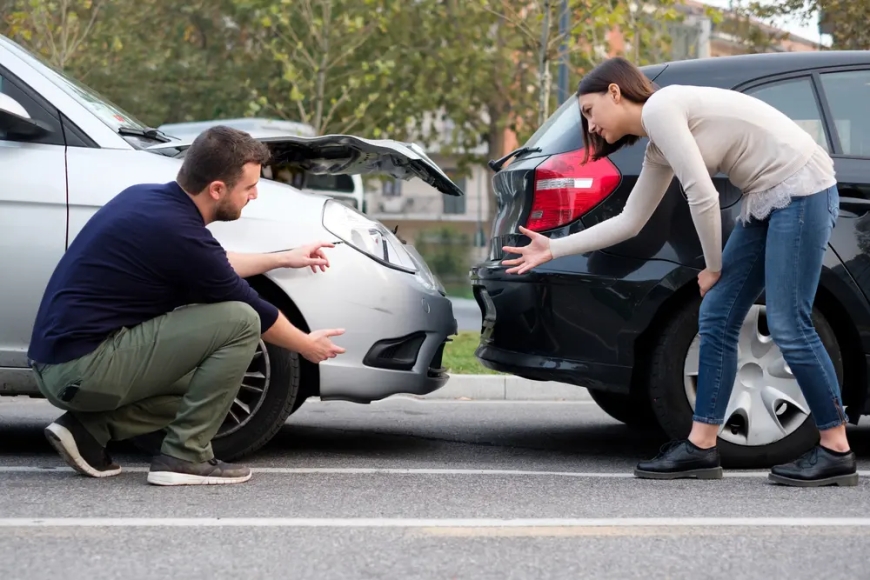What to Do Immediately After a Car Accident

After a car accident, knowing what to do can make a big difference. Whether its a minor bump or a more serious collision, your actions in the first few minutes can help keep everyone safe, ensure accurate documentation, and support any follow-up process with insurance or legal professionals. Being prepared with the proper steps gives you confidence and control.
Well outline the most crucial car accident immediate actions to take after a car accident, along with practical car accident safety tips. These steps help you stay organized, gather essential details, and know when to seek help. If youve been involved in a car accident in New York, these guidelines can help you handle the situation calmly and effectively.
1. Prioritize Safety First
If youre physically able, check your surroundings. Is the vehicle in a safe location? Can you move it out of traffic?
- Turn on hazard lights. This alerts other drivers to the situation.
- If possible, move to a safe area. If the car is drivable, move it to the shoulder or side of the road.
- Stay in the car if it's unsafe to exit. For example, on a busy highway, it may be safer to wait for help.
If anyone is injured, call 911 immediately. Even in minor accidents, injuries may not immediately showit's best to be cautious.
2. Check for Injuries and Call Emergency Services
After ensuring you're safe, check if anyone in your vehicle is hurt. Then, check on the other driver and passengers.
- Call 911 to report the accident and request medical attention if needed.
- Be clear about your location and the number of people involved.
- Do not assume someone else has calledmake sure emergency services are alerted.
Even if you feel okay, it's smart to be examined. Some injuries, like whiplash or concussions, dont appear until hours or days later.
3. Stay Calm and Avoid Arguments
Accidents can trigger strong emotions, but its essential to remain calm.
- Avoid blaming the other driver or admitting fault.
- Do not argue or raise your voice. Focus on collecting information.
- Cooperate with police and emergency responders when they arrive.
Staying calm ensures the situation doesnt escalate and helps preserve a clear event record.
4. Exchange Information with the Other Driver
Gather the following from all parties involved in the accident:
- Full name and contact information
- Drivers license number
- Vehicle make, model, and license plate.
- Insurance company name and policy number
Take clear photos of all IDs, insurance cards, and vehicle damage. Make sure all information is accurate and legible.
5. Document the Scene
Accurate documentation is a key part of car accident immediate actions. If youre able to do so safely, take the following steps:
- Photograph all vehicles from multiple angles, including damage, location, and license plates.
- Capture road conditions (wet roads, traffic signs, debris).
- Take notes about the time, weather, traffic, and anything unusual.
- If there are witnesses, get their names and contact details.
This evidence will be valuable for insurance claims and possible legal follow-up.
6. Cooperate with Law Enforcement
When police arrive, provide honest, factual answers to their questions. Stick to what you observeddont speculate or guess.
- Ask for the officers name and badge number.
- Request the accident report number and find out how to obtain a copy.
- Avoid making statements about fault or offering legal opinions.
The official report can significantly affect insurance claims or litigation, so clarity is key.
7. Notify Your Insurance Company
Contact your insurance provider as soon as possible. Most companies require prompt notice of any accident.
- Provide basic facts about the collision.
- Share the documentation and the police report number.
- Ask what information they need to begin processing your claim.
You do not need to give a recorded statement until youve reviewed your policy or spoken with legal counsel, especially if injuries are involved.
8. Seek Medical Evaluation
If you declined an ambulance at the scene, follow up with a healthcare provider. Common post-accident symptoms include:
- Headaches
- Neck or back pain
- Dizziness or nausea
- Tingling or numbness
Delaying treatment can make recovery harder and complicate any insurance or legal claim. Medical records also provide evidence of injury linked directly to the accident.
9. Avoid Posting on Social Media
After a crash, its best not to post about the event online. Social media posts can be taken out of context or used against you.
Something casual like Glad Im okay! could be misinterpreted later. Instead, document your case privately and talk to legal professionals if needed.
10. Contact a Personal Injury Attorney (When Necessary)
If you were injured, the accident involved major damage, or liability is unclear, speaking with a personal injury attorney is recommended.
An attorney can:
- Evaluate the fault and evidence
- Handle insurance negotiations
- Determine if compensation is available for medical bills, lost wages, or pain
- Represent you in court, if needed
Legal representation ensures your rights are protected and you're not pressured into accepting a low settlement.
Conclusion
Following the right car accident immediate actions can make a major difference in safety, claim success, and long-term recovery. Whether the incident seems minor or serious, taking organized, informed steps helps protect your rights.
Have questions after a car accident in New York? Radow Law Group is here to guide you. Their team offers clear legal support and helps you take the next step, understanding your options or confidently moving forward. Schedule your consultation today.












































